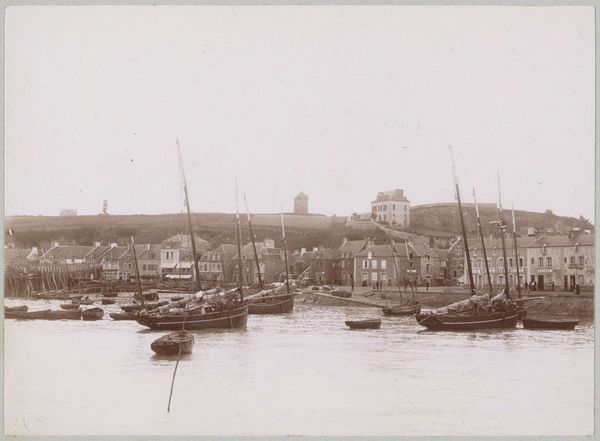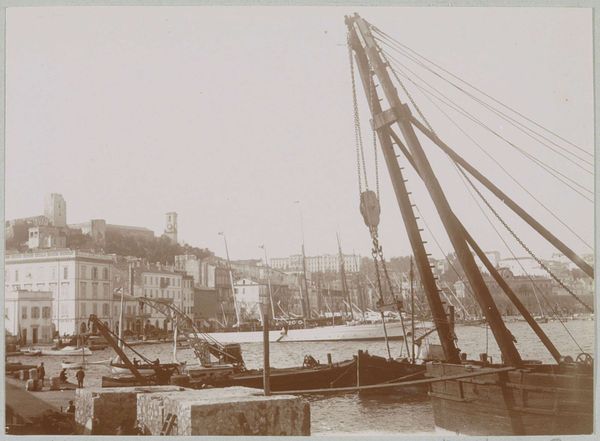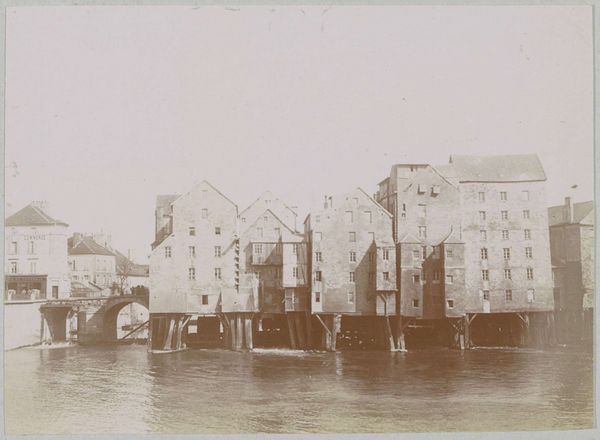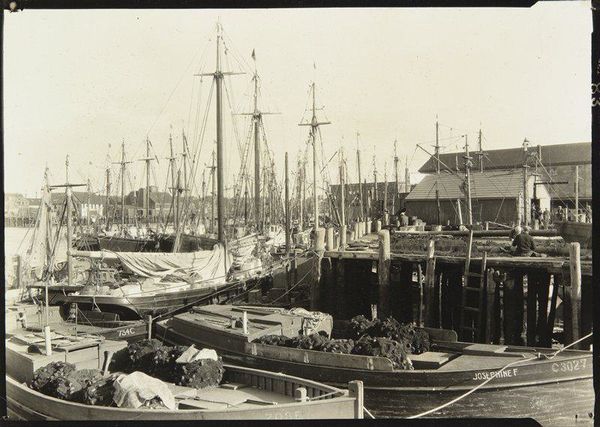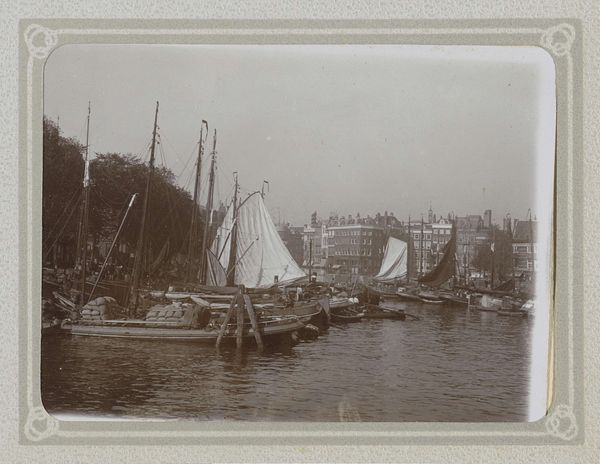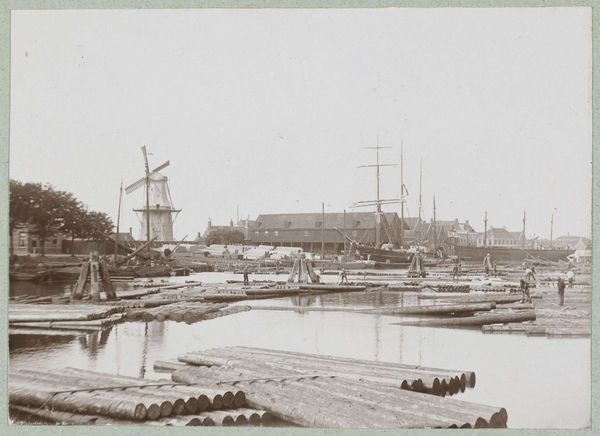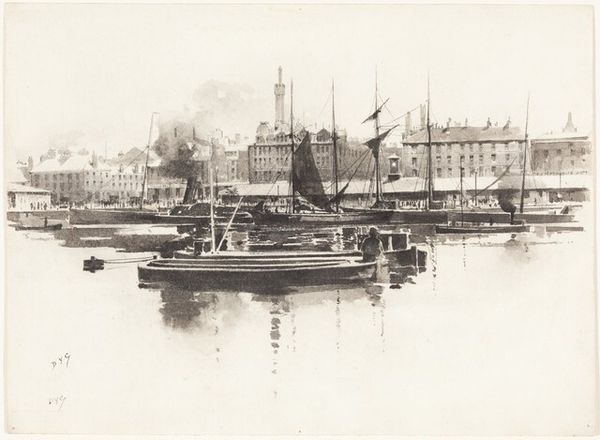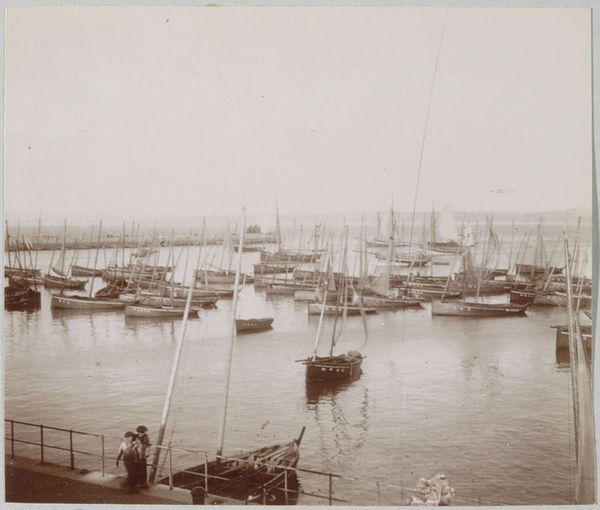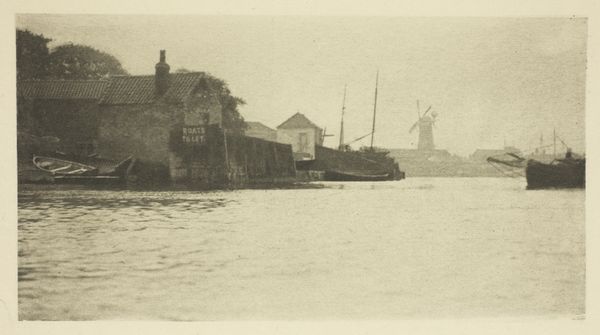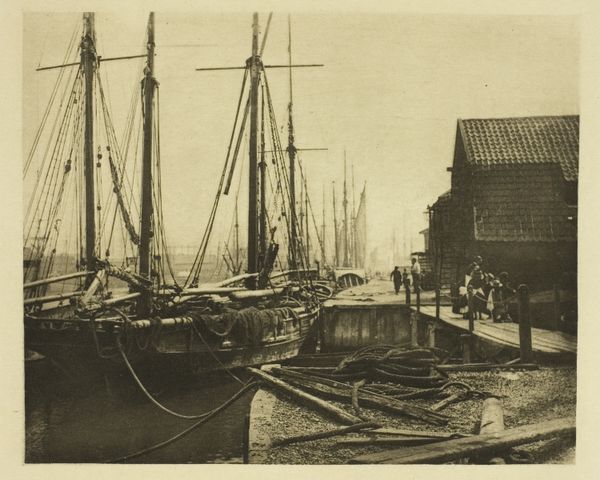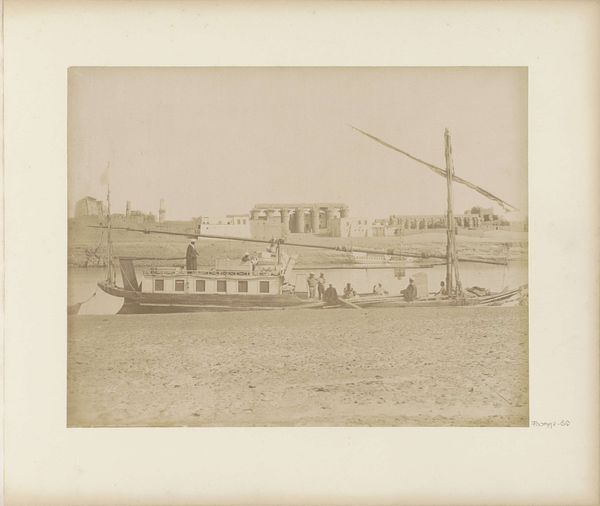
print, photography, albumen-print
# print
#
landscape
#
photography
#
cityscape
#
albumen-print
Dimensions: height 69 mm, width 82 mm
Copyright: Rijks Museum: Open Domain
Curator: The artwork before us is titled "View of the harbor and the Castle of Brest," a photograph created in 1901. It is currently held in the collection of the Rijksmuseum. Editor: It’s… stark, almost monolithic. The formidable stone structure dominates the harbor scene. It evokes a feeling of isolation, despite the bustling nature we imagine happening down at the docks. Curator: I concur; the architectonic form certainly governs the composition. Note the tonal scale rendered via the albumen process; it gives a narrow but appreciable spectrum. It pushes the photograph into a world of form more than that of reportage, of merely illustrating a real view. The diagonal thrust from the lower left to the upper right organizes and moves the eye dynamically. Editor: I am drawn to think about this scene through a historical lens. Imagine the labour it would have required to construct a fortification of such magnitude. How was the stone extracted, transported, and assembled? Think of the working people, toiling for the maintenance of the docks and upkeep of naval activity. Curator: Indeed. Although absent of explicit human subjects in obvious labor, the forms themselves tell a similar story of utility and historical purpose. The very shape of the image frame imposes order. It emphasizes, not the free spread of visual data, but a formal distillation that lends coherence to its subject. Editor: Consider the presence of boats within the image, vessels used to foster trading relationships or to advance military agendas of empire. How do these forms then comment on our current understanding of colonial dynamics and political dominance? The history is written on water and stone, brought out to us by light sensitive processes of albumen! Curator: Very astute. It becomes a visual synecdoche where a portion visually references a larger, grander historical period of both material and economic transaction, yet reduced to a two-dimensional art object. Editor: In that moment caught in light, we are granted a glimpse of an era's soul revealed through materials and production—stone, ship, and emulsion forever bound. Curator: Precisely. A static dance of visual grammar reflecting material historical processes.
Comments
No comments
Be the first to comment and join the conversation on the ultimate creative platform.
